Looking for a Greek yogurt substitute? From easy swaps like sour cream to more specific substitutes like bananas, we’ve got options for you (ranked from best to worst)!

What is Greek Yogurt?
Greek yogurt is a type of yogurt that has been strained to remove most of its whey and lactose, resulting in a thicker, creamier, protein-dense, and more concentrated yogurt. It’s typically made from cow’s milk, but also goat or sheep’s milk. It undergoes a fermentation process using live bacterial cultures giving it its distinctive texture and flavor content compared to regular yogurt.
What Does Greek Yogurt Taste Like?
Greek yogurt has a rich and creamy texture, and its taste is tangy, slightly sour, and often described as more robust or concentrated compared to regular yogurt. It has a distinctive dairy flavor with a pleasant acidity. The taste can vary depending on the brand and any additional flavorings or sweeteners that may be added.
How Is Greek Yogurt Made?
First, we should point out that you can easily make your own Homemade Greek Yogurt. Homemade yogurt basically mirrors the commercial process which is as follows:
- Pasteurize: Milk is pasteurized to kill any harmful bacteria and to extend the yogurt’s shelf life.
- Cultures: Live bacterial cultures, such as Lactobacillus bulgaricus and Streptococcus thermophilus, are added to the milk. These bacteria are responsible for fermenting the milk and turning it into yogurt.
- Fermentation: The milk is fermented at a controlled temperature for several hours, allowing the bacterial cultures to multiply and convert the milk’s lactose into lactic acid. This process thickens the yogurt and gives it its characteristic tangy taste.
- Strained: After fermentation, the yogurt is strained to remove the whey, which is the watery part of the milk. This straining process is what makes Greek yogurt thicker and creamier compared to regular yogurt. The degree of straining can vary, with some Greek yogurts being thicker than others as some manufacturers strain their yogurt multiple times.
- Flavoring: The resulting Greek yogurt may then be flavored with honey, vanilla, or you name it before packaging.
Substitutes for Greek Yogurt
We’re going through 17 substitutes for Greek yogurt, each given a grade based on how well we think they work as a substitute. The grades reflect our preferences after years of using Greek yogurt substitutes in various recipe development (learn more about our recipe development and experience here!) With that said, your preferences may differ!
Plain Yogurt (Grade A)
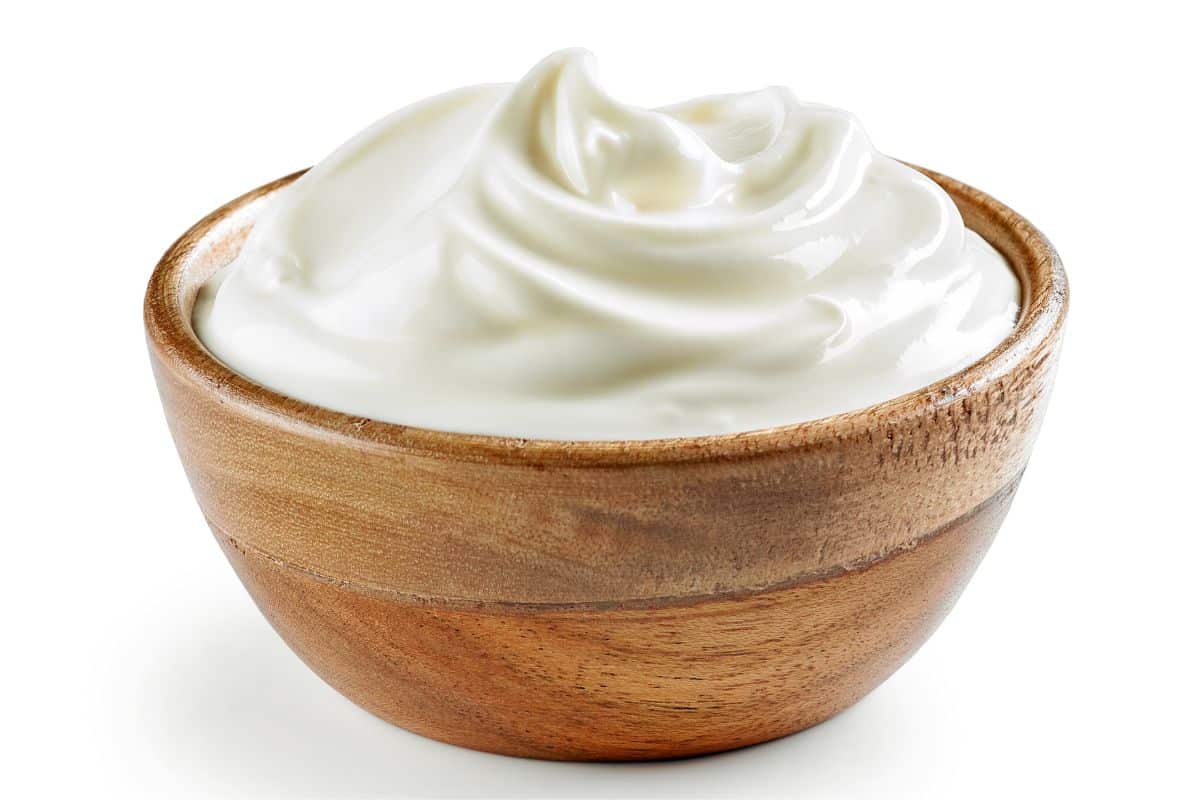
Substitution Effectiveness: Plain yogurt can be an excellent Greek yogurt substitute. It closely resembles the tangy flavor and consistency of Greek yogurt, making it one of the most versatile alternatives.
Replacement Ratio and Considerations: You can replace Greek yogurt with plain yogurt at a 1:1 ratio in most recipes. Just be mindful of the flavors you are replacing.
Recommended Usage: Plain yogurt can be used effectively in dishes such as marinades, salad dressings, dips, toppings, smoothies, and baking. It’s a versatile choice when you want to maintain something close to Greek yogurt’s tangy flavor. It is also generally a bit cheaper, lower in calories, and the easiest of alternatives to Greek yogurt.
Sour Cream (Grade A-)
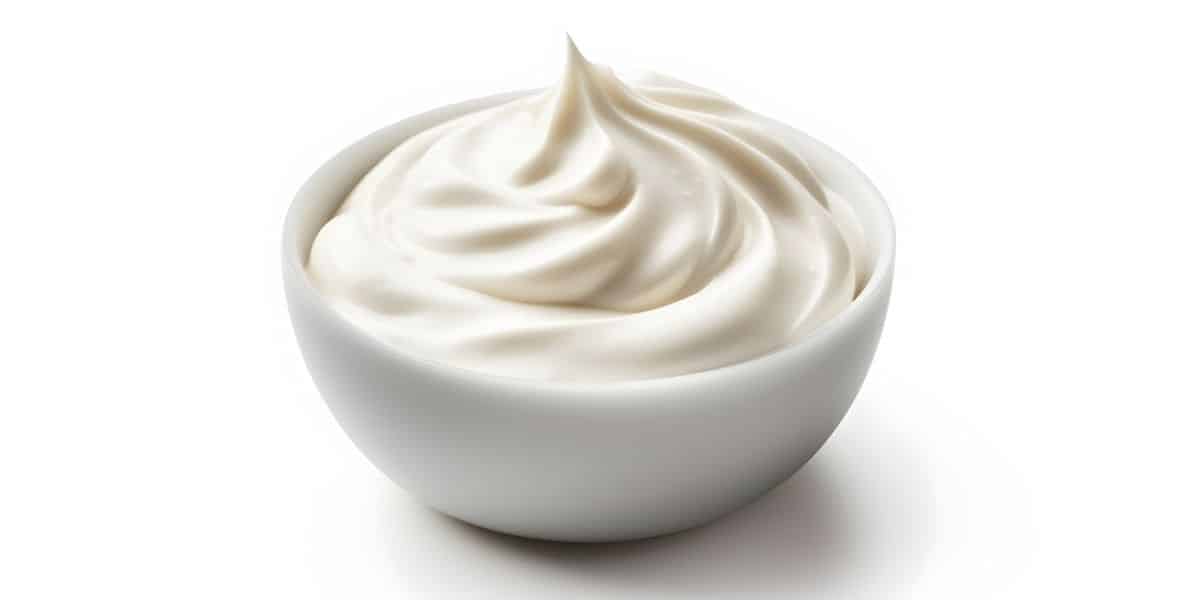
Substitution Effectiveness: Sour cream is an effective substitute for Greek yogurt in many recipes. It shares a similar tangy flavor and creamy consistency, making it a good alternative.
Replacement Ratio and Considerations: You can typically replace Greek yogurt with sour cream at a 1:1 ratio in most recipes. However, keep in mind that sour cream can be slightly richer and fattier, which could affect the final taste and texture of your dish. Adjust the amount if you want to control the level of tanginess.
Recommended Usage: Sour cream works well in recipes that call for the tangy profile of Greek yogurt, such as dips, salad dressings, and baked goods. It’s a suitable substitute when you want a creamier texture with a similar flavor.
Ricotta (Grade B+)
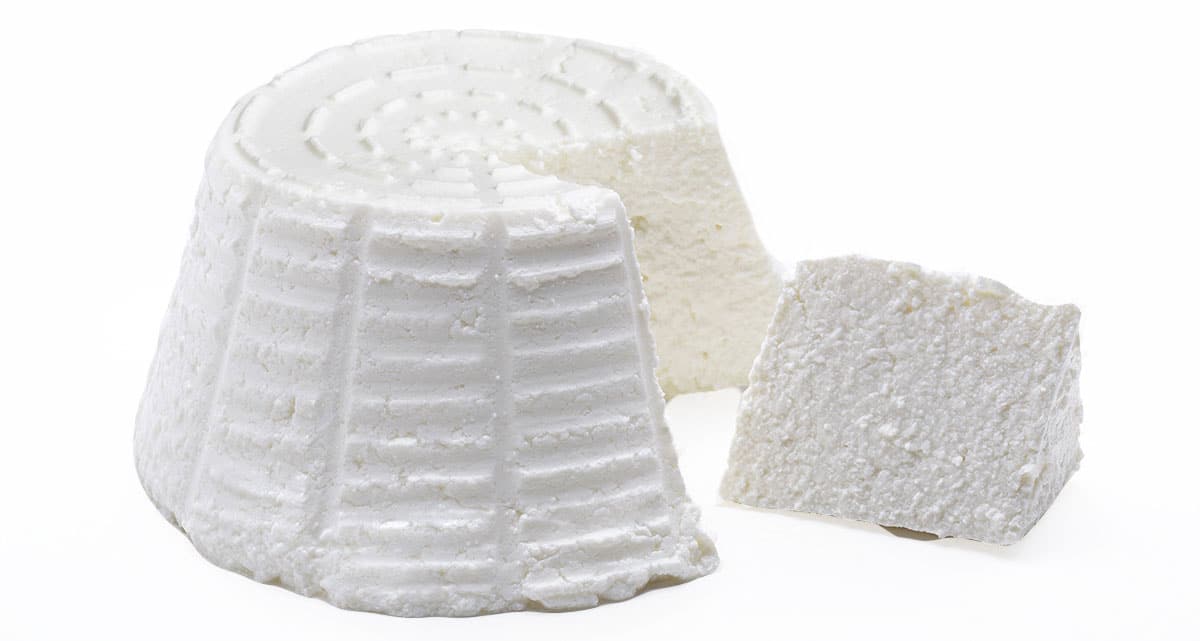
Substitution Effectiveness: Ricotta is quite different from Greek yogurt in terms of texture and flavor. It’s creamier and less tangy, so it is not ideal for all recipes, but we think in general it is a pretty good substitute.
Replacement Ratio and Considerations: When substituting ricotta for Greek yogurt, we recommend you use a 1:1 ratio, but you may need to adjust moisture levels in your recipe by adjusting other ingredients.
Recommended Usage: Ricotta is a suitable substitute in recipes where creaminess is more critical than the tanginess of Greek yogurt. It works well in dishes like lasagna, stuffed pasta, and some desserts.
Cream Cheese (Grade B+)
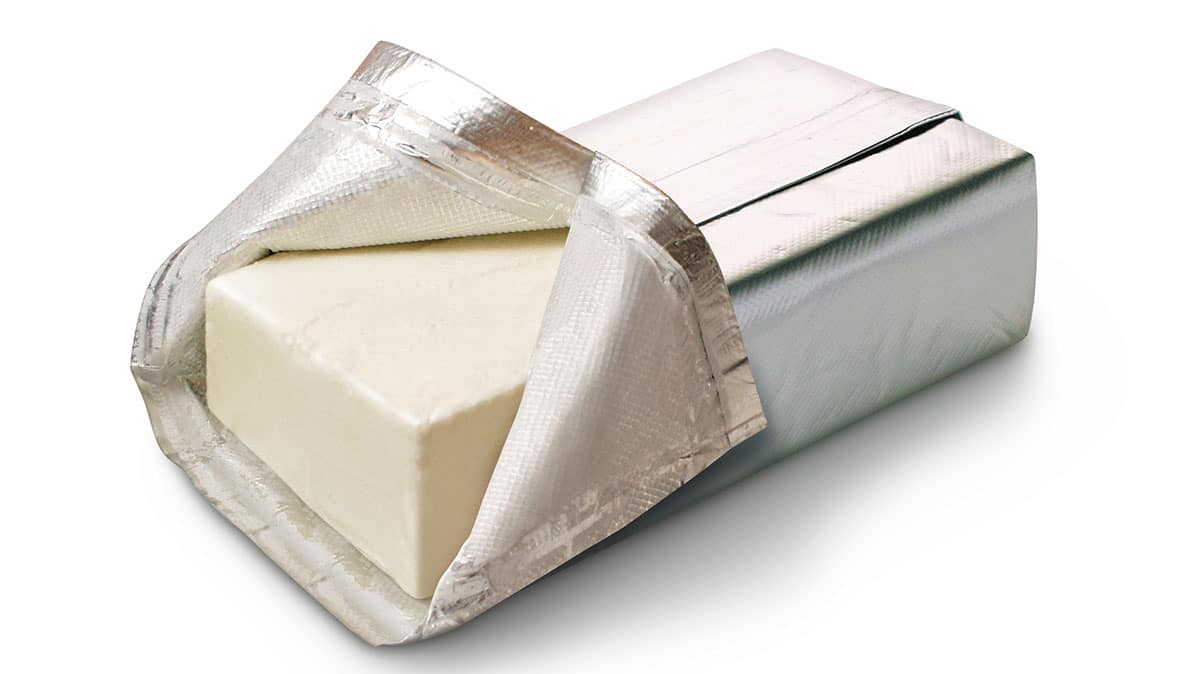
Substitution Effectiveness: Cream cheese is thicker and has a distinct flavor that isn’t a great match for Greek yogurt. It works as a substitute when a creamy texture is more essential than the yogurt’s tanginess.
Replacement Ratio and Considerations: You can replace Greek yogurt with cream cheese at a 1:1 ratio, though be aware that it will affect the flavor and consistency of your recipe.
Recommended Usage: Cream cheese is a good alternative for recipes such as baked goods, cheesecakes, frostings, sandwiches, spreads, and wraps where a creamy and slightly less tangy flavor can be desirable.
Silken Tofu (Grade B+)
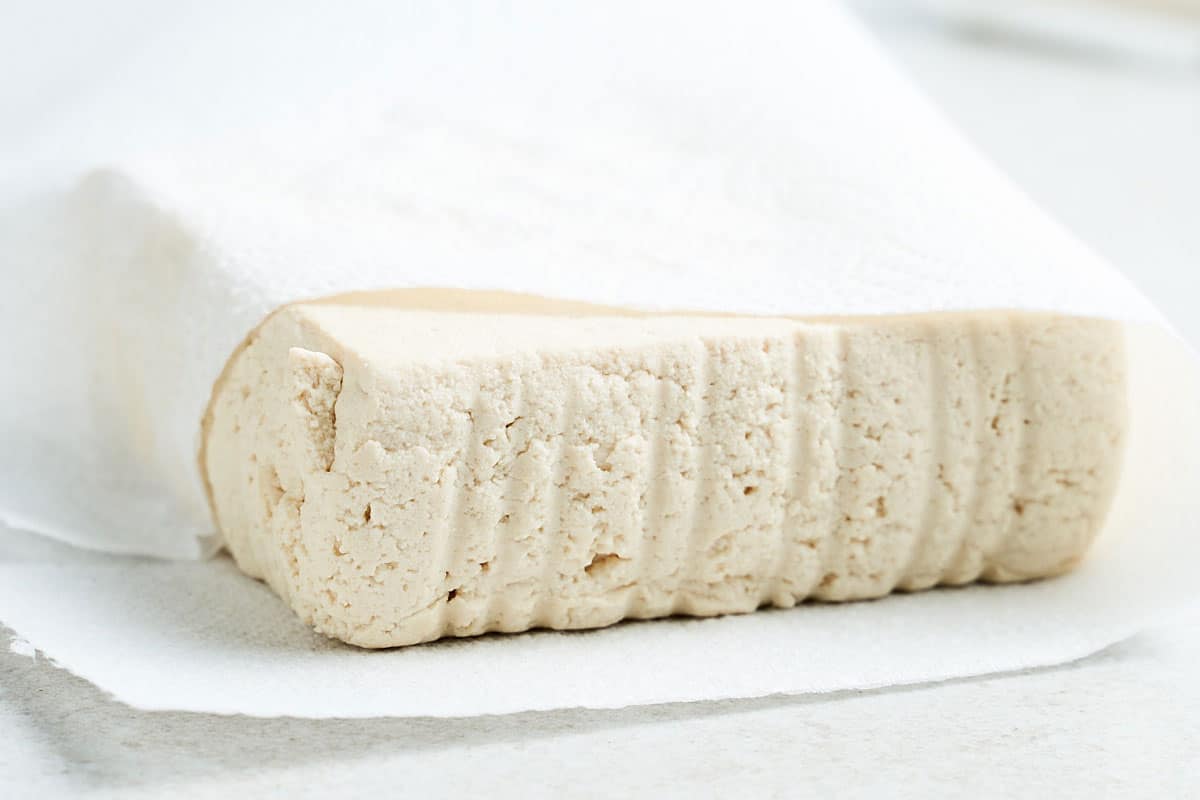
Substitution Effectiveness: Silken tofu is an effective substitute for Greek yogurt, especially in vegan or dairy-free recipes. It has a neutral flavor and a creamy texture.
Replacement Ratio and Considerations: You can replace Greek yogurt with silken tofu at a 1:1 ratio in most recipes. Blend the tofu for a smoother texture if needed, and add 1 or more teaspoons of lemon juice to mimic Greek yogurt’s acidity. The recipe will dictate how much lemon juice you need to add so add slowly and test it.
Recommended Usage: Silken tofu works well in vegan desserts, smoothies, salad dressings, and creamy soups. It’s a versatile choice when you want a dairy-free alternative with a similar creamy texture.
Whipped Feta (Grade B+)
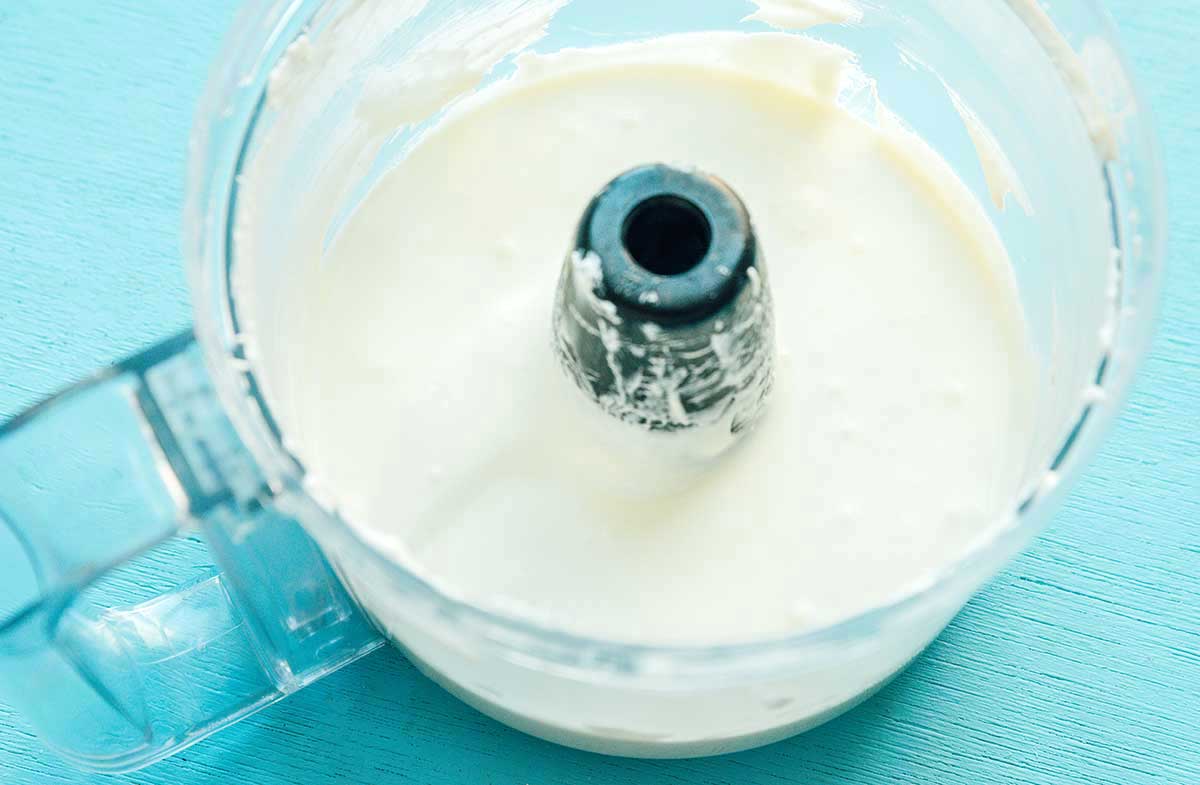
Substitution Effectiveness: Whipped feta can be a delicious alternative to Greek yogurt in certain recipes, particularly those with a creamy texture and savory flavor. It provides a tangy and salty note that differs from Greek yogurt’s profile, making it particularly suitable for savory dishes.
Replacement Ratio and Considerations: To replace Greek yogurt with whipped feta, use a 1:1 ratio in recipes where the flavor is compatible. However, keep in mind that whipped feta has a stronger and saltier taste, so it’s best used in savory applications. Adjust the salt content in your recipe to taste accordingly.
Recommended Usage: Whipped feta works well as a topping for savory dishes, in dips, or as a filling for stuffed foods like peppers or pastries. It’s not an ideal substitute for sweet or dessert recipes.
Labneh (Grade B+)
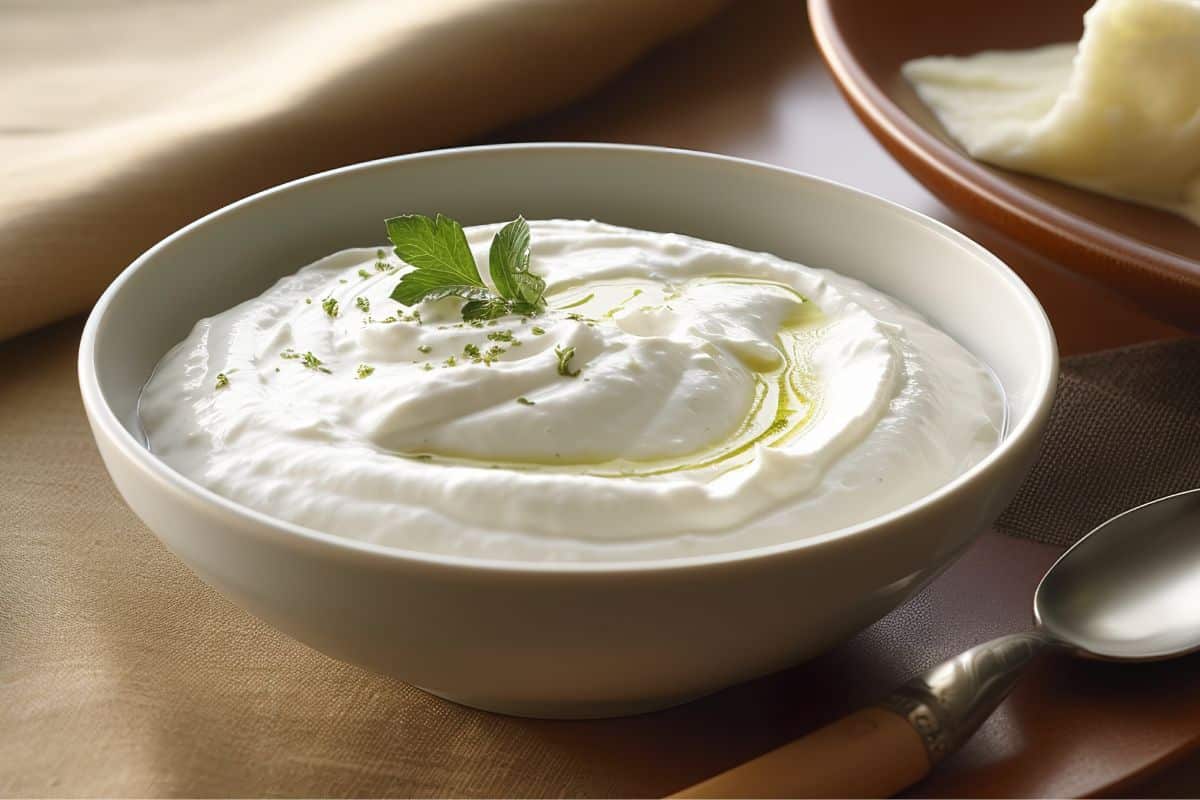
Substitution Effectiveness: Labneh is an excellent substitute for Greek yogurt, particularly when you want a Middle Eastern or Mediterranean flavor. It shares a similar tanginess and creamy consistency.
Replacement Ratio and Considerations: You can often replace Greek yogurt with labneh at a 1:1 ratio. Both have a comparable texture and tanginess.
Recommended Usage: Labneh works well in dishes that benefit from a tangy, creamy element, such as dips, spreads, and as a topping for savory or sweet foods.
Kefir (Grade B)

Substitution Effectiveness: Kefir is a reasonably good substitute for Greek yogurt, especially in liquid-based recipes. It offers a similar tangy flavor but has a much thinner consistency.
Replacement Ratio and Considerations: You can replace Greek yogurt with kefir at a ratio of 1 cup of Greek yogurt replaced by ¾ cup kefir. For other measurements, this equates to:
- ½ cup Greek yogurt is replaced by ⅜ cup kefir
- 1 cup Greek yogurt is replaced by ¾ cup kefir
- 2 cups Greek yogurt is replaced by 1 ½ cups of kefir
Recommended Usage: Kefir works well in smoothies, salad dressings, marinades, and certain baked goods.
Buttermilk (Grade B)
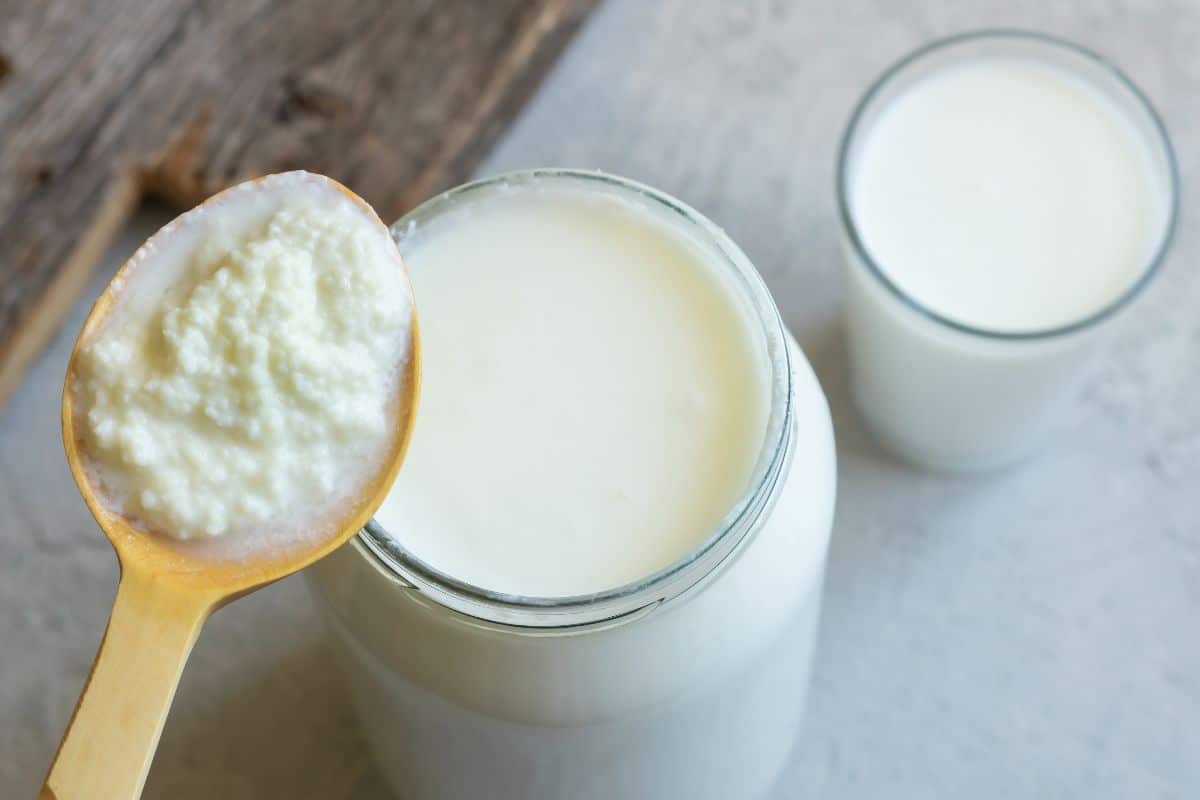
Substitution Effectiveness: Buttermilk is thinner and tangier than Greek yogurt, so its effectiveness as a substitute varies depending on the recipe.
Replacement Ratio and Considerations: Replacing Greek yogurt with buttermilk can be challenging due to the significant difference in consistency. You will need to use less buttermilk and adjust the moisture content in the recipe. The conventional wisdom here is to replace 1 cup of Greek yogurt with ¾ cup of buttermilk. So you don’t have to do the math:
- ½ cup Greek yogurt is replaced by ⅜ cup buttermilk
- 1 cup Greek yogurt is replaced by ¾ cup buttermilk
- 2 cups Greek yogurt is replaced by 1 ½ cups buttermilk
Recommended Usage: Buttermilk is an appropriate substitute in recipes where tanginess is desired, such as in marinades, salad dressings, and some baked goods.
You can also very quickly make your own buttermilk. Add 1 tablespoon of vinegar (white or apple cider work best) or 1 tablespoon of lemon juice to 1 Cup of milk and let it stand for 5-10 minutes, and you will have a reasonable faux buttermilk.
Cottage Cheese (Grade B)
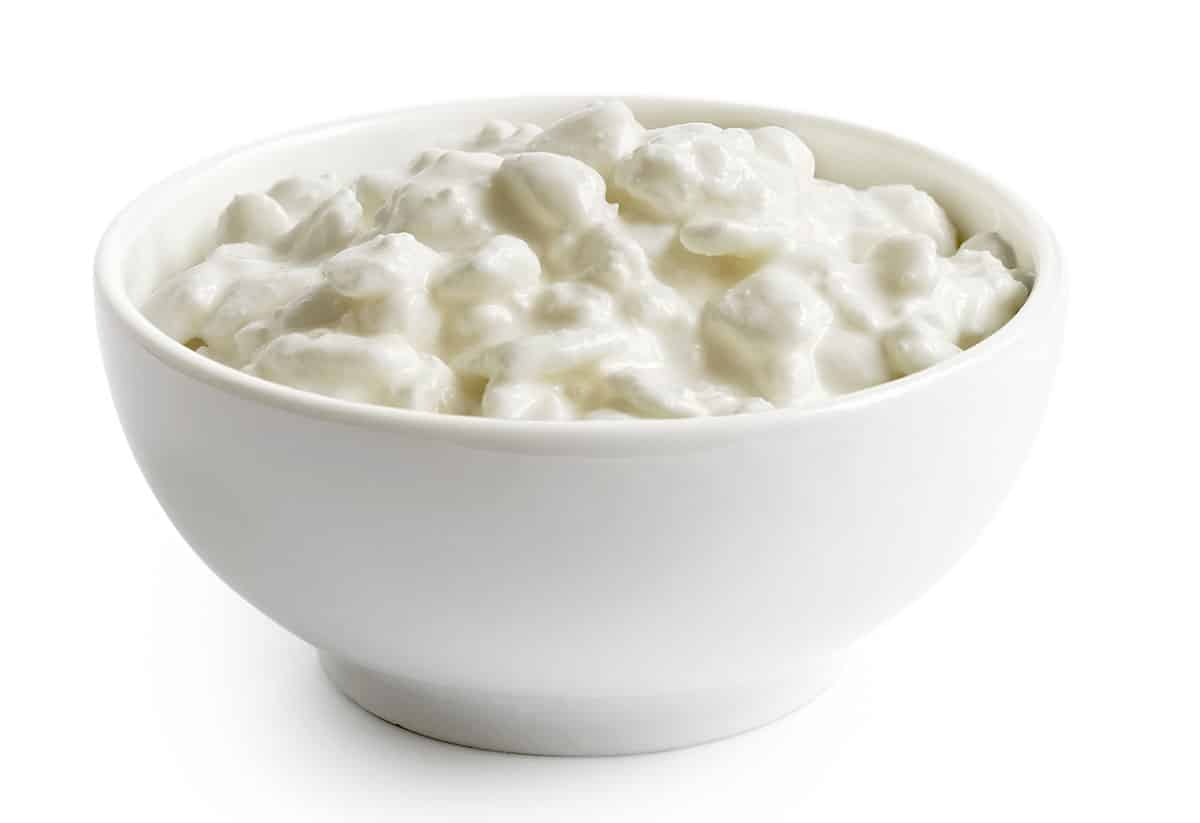
Substitution Effectiveness: Cottage cheese is a reasonable substitute for Greek yogurt in some applications. It offers a creamy texture and can provide a similar level of protein, but it has a distinct flavor and is not as tangy as Greek yogurt. If you want a milder taste in your recipe, this is a good option.
Replacement Ratio and Considerations: To replace Greek yogurt with cottage cheese, use a 1:1 ratio in your recipes, but consider that the texture will be slightly different. We recommend you strain the cottage cheese first to remove excess liquid. You can also blend cottage cheese to achieve a smoother consistency.
Recommended Usage: Cottage cheese can be used in smoothies, dips, and certain desserts. It works well in recipes where a creamy texture is more important than the yogurt’s tanginess. Blending it can help achieve a smoother consistency.
Mashed Bananas (Grade B-, but this is recipe dependent)
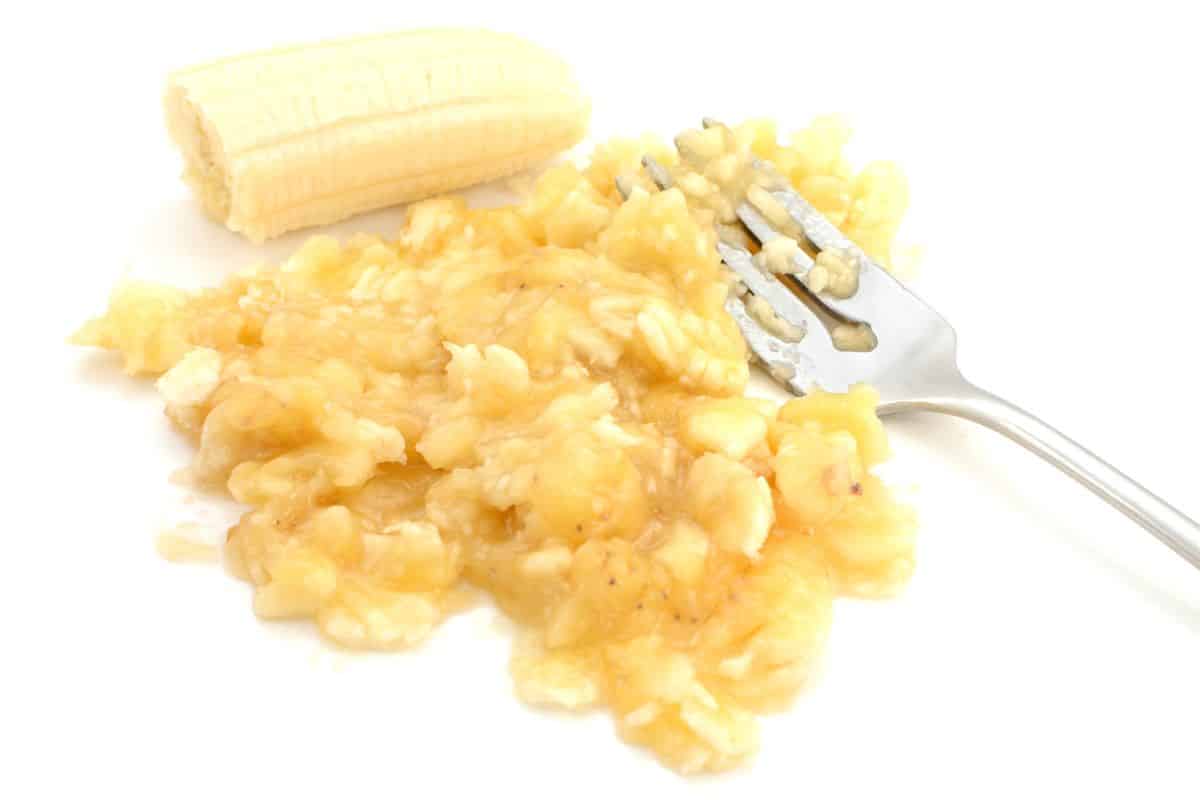
Substitution Effectiveness: Mashed bananas are a unique substitute for Greek yogurt, especially in baking. They offer natural sweetness and moisture but won’t provide the tanginess or protein content of yogurt.
Replacement Ratio and Considerations: To replace Greek yogurt with mashed bananas, you can often use a 1:1 ratio in baking recipes. Keep in mind that this substitution will add sweetness and a distinctive banana flavor to your dishes, so you will probably want to decrease the amount of sugar in the recipe. Also, consider adding a teaspoon or more of lemon juice to replicate the tanginess of Greek yogurt missing in bananas.
Recommended Usage: Mashed bananas are a good substitute for baked goods like muffins, pancakes, and quick breads. They can also be a great substitute for yogurt in smoothies when you want to add natural sweetness and creaminess.
Whole Milk (Grade B-)
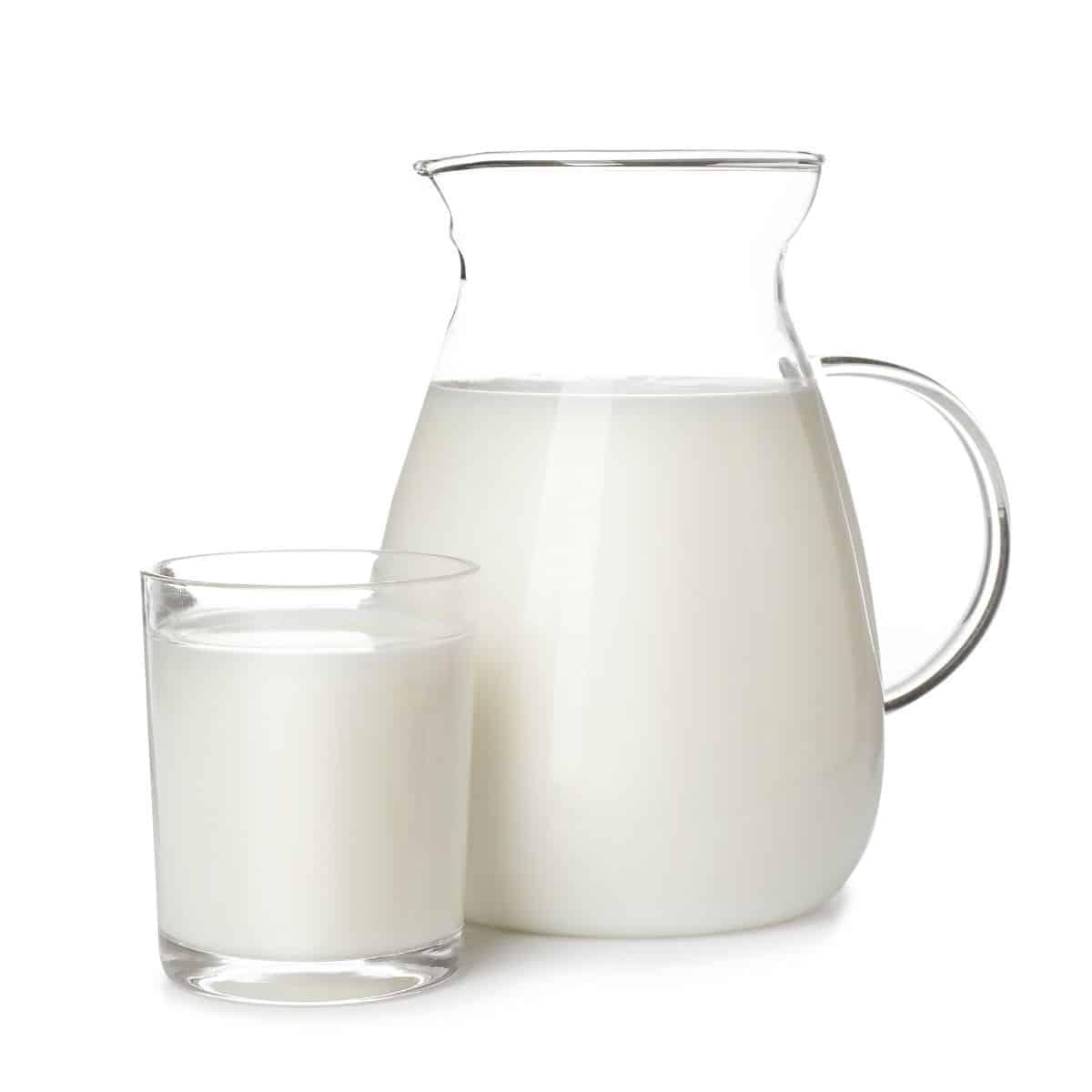
Substitution Effectiveness: Whole milk is not an ideal substitute for Greek yogurt due to its liquid nature and lack of tanginess. It works in some recipes, but it will significantly alter the texture and flavor.
Replacement Ratio and Considerations: There’s no direct 1:1 replacement ratio for whole milk because it’s a liquid. You can use it in recipes that require a small amount of Greek yogurt for moisture, but you’ll need to make adjustments based on the desired consistency. We recommend you replace 1 cup of Greek yogurt with 3 ⁄ 4 cups of milk. Other quantities equate to:
- ½ cup Greek yogurt is replaced by ⅜ cup milk
- 1 cup Greek yogurt is replaced by ¾ cup milk
- 2 cups Greek yogurt is replaced by 1 ½ cups of milk
Recommended Usage: Whole milk can be used sparingly in baking recipes where moisture is needed, but it won’t provide the same thickness or tanginess as Greek yogurt. It’s not an ideal choice for dishes where these qualities are essential.
Avocado (Grade B-)
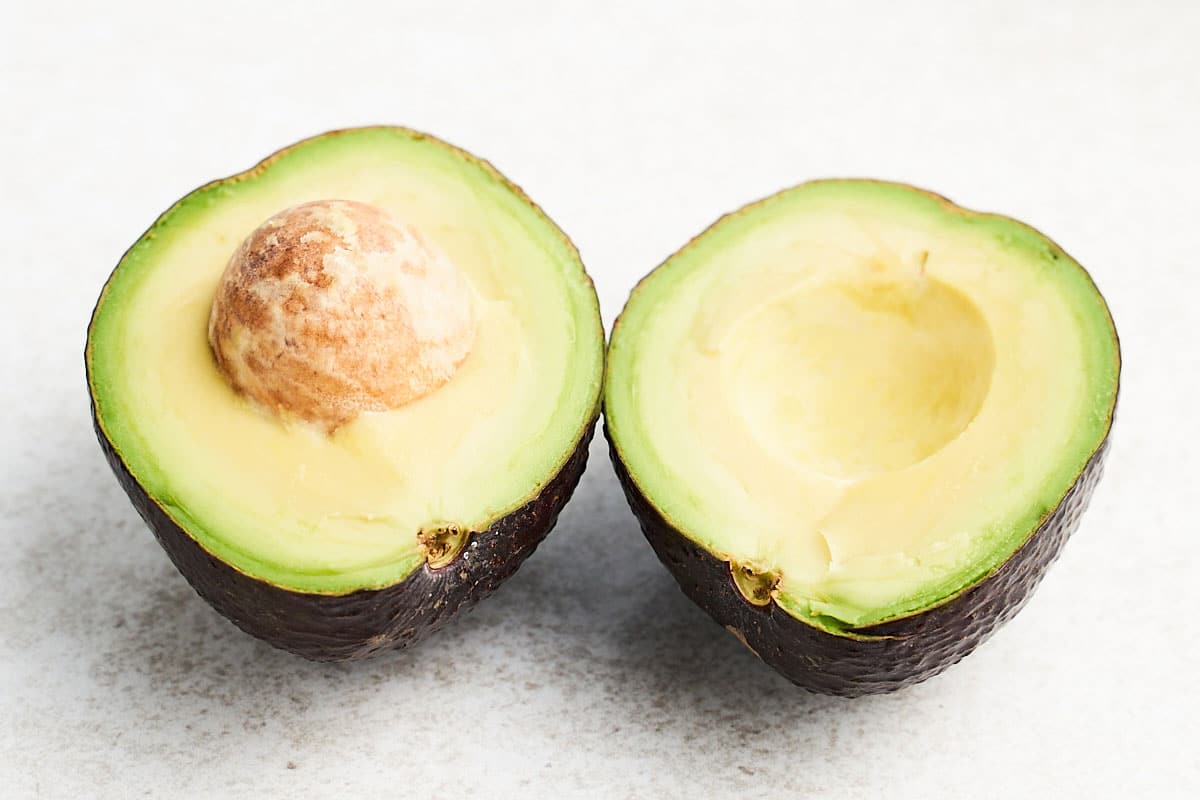
Substitution Effectiveness: Avocado is a unique substitute that can work in certain recipes. It provides creaminess and healthy fats but lacks the tanginess of Greek yogurt. Avocado’s mild, and largely popular, taste shouldn’t negatively affect many recipes though it is decidedly different from Greek yogurt.
Replacement Ratio and Considerations: To replace Greek yogurt with avocado, use a 1:1 ratio in recipes that can accommodate the flavor and texture. Avocado can be blended to achieve a smoother consistency.
Recommended Usage: Avocado can be used in smoothies, salad dressings, and certain dips, especially when you want a creamy, plant-based alternative. It’s not ideal for recipes that require the tanginess of Greek yogurt, and there are better substitutes for baking.
Coconut Cream (Grade B-)
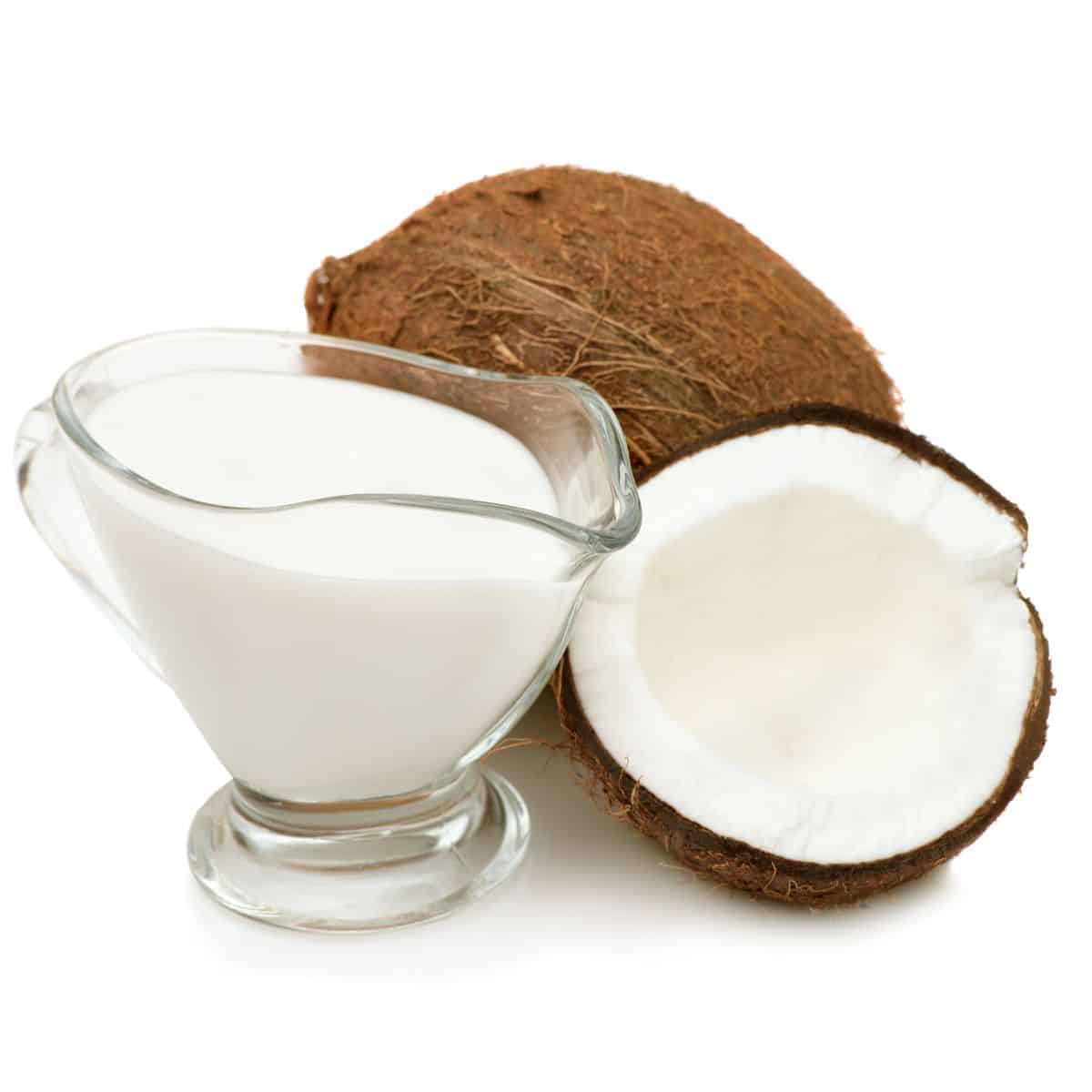
Substitution Effectiveness: Coconut cream can be a suitable alternative for Greek yogurt, especially in dairy-free or vegan recipes. It has a rich, creamy texture and a mild coconut flavor, which may not always be desired. For a coconut lover, however, this is a great swap.
Replacement Ratio and Considerations: You can replace Greek yogurt with coconut cream at a 1:1 ratio in most recipes, although it will introduce a subtle coconut taste. It’s an excellent choice when you want a dairy-free or tropical twist in your cooking. Just be sure to use Coconut Cream not coconut milk, or coconut drinks. These are both much thinner.
Recommended Usage: Coconut cream works well in smoothies, curries, desserts, and tropical-flavored recipes. It may not be ideal in recipes that require the tanginess of Greek yogurt. Also, keep in mind that coconut cream is much more caloric than Greek yogurt.
Mayo (Grade B-)
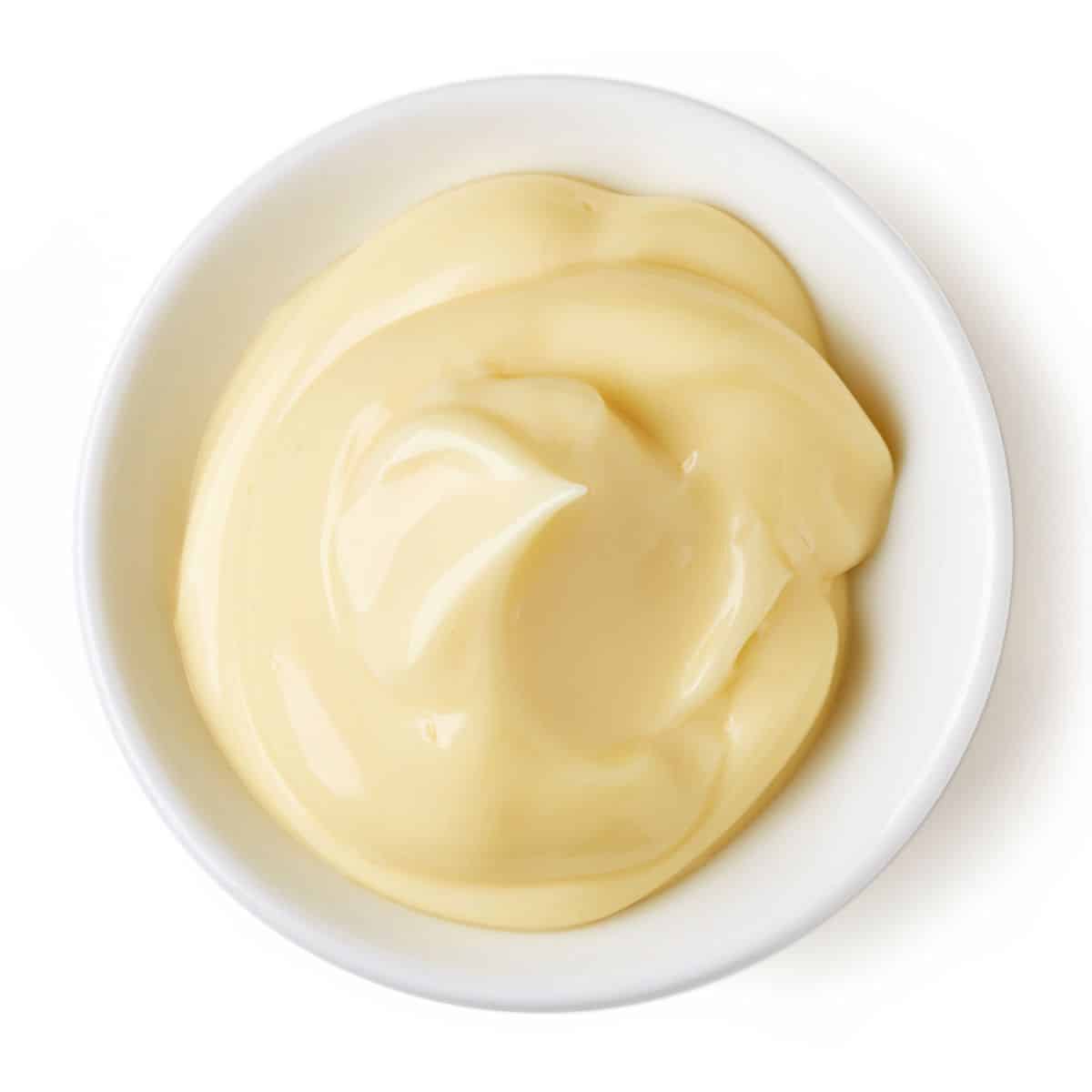
Substitution Effectiveness: Mayo can work as a substitute for Greek yogurt in specific recipes, particularly those that require creaminess. However, it has a decidedly different flavor and will add a significant number of calories to your recipe.
Replacement Ratio and Considerations: You can typically replace Greek yogurt with mayo at a 1:1 ratio, but it will affect the overall flavor. Consider using a light or vegan mayo for a milder taste and fewer calories. If you want to maintain some of the tangy flavor from Greek yogurt, consider adding a bit (1 tsp?) of lemon juice to your recipe.
Recommended Usage: Mayo can be used in recipes such as potato salad, coleslaw, and creamy dips, where a thick creamy texture and flavor is acceptable. It’s less ideal in recipes where the yogurt’s tanginess is crucial.
Pumpkin Puree (Grade B-)
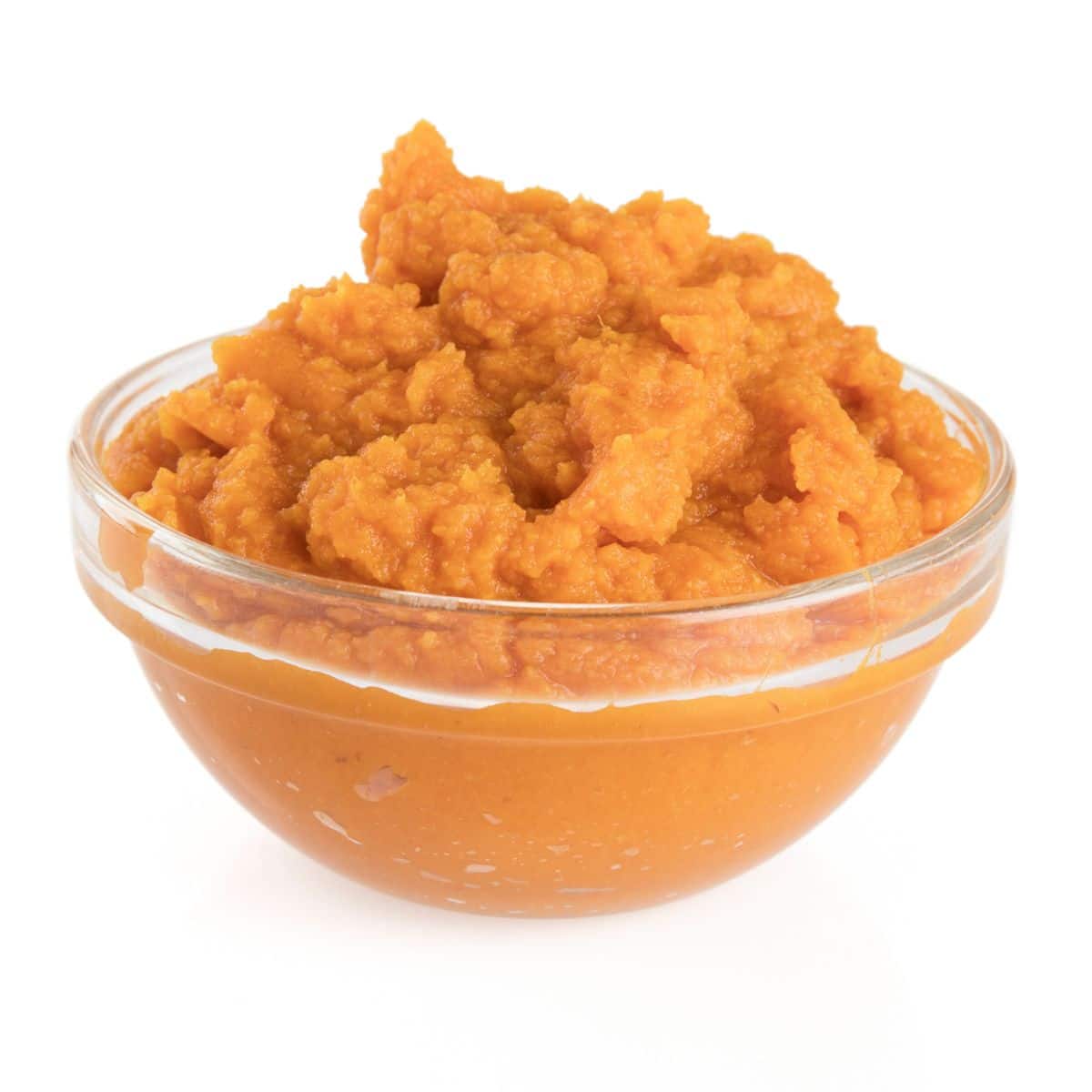
Substitution Effectiveness: Pumpkin puree is a reasonable substitute for Greek yogurt in recipes where you’re looking for moisture and a mild, earthy sweetness. It works particularly well in fall-inspired or spiced dishes, and it is so easy to make homemade pumpkin puree.
Replacement Ratio and Considerations: You can often replace Greek yogurt with pumpkin puree at a 1:1 ratio in recipes that can accommodate the change in flavor. It adds moisture and a subtle pumpkin taste to your dishes.
Recommended Usage: Pumpkin puree is suitable in recipes like muffins, pancakes, and certain desserts. It’s not the best choice for recipes that rely on the tangy or creamy elements of Greek yogurt.
Applesauce (Grade B-)
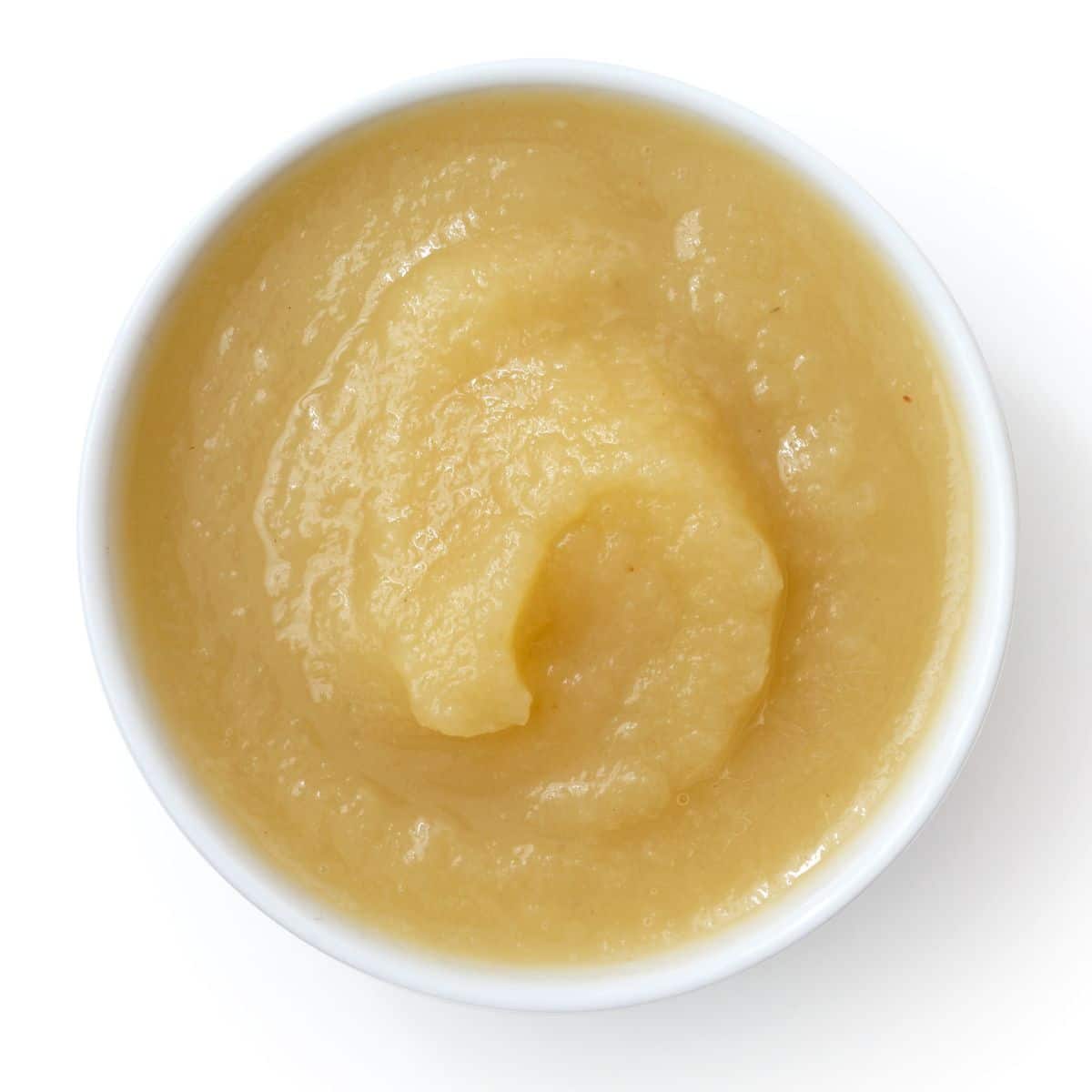
Substitution Effectiveness: Applesauce can serve as a reasonable substitute for Greek yogurt in recipes where you want moisture and natural sweetness. It works particularly well in baking recipes.
Replacement Ratio and Considerations: You can often replace Greek yogurt with applesauce at a 1:1 ratio in baking recipes. It adds moisture and a mild apple flavor, which can enhance certain dishes.
Recommended Usage: Applesauce is suitable for recipes like muffins, cakes, and quick breads, where its natural sweetness and moisture are assets. It’s not ideal for recipes requiring the tanginess of Greek yogurt.
We hope you found a substitute for Greek yogurt that suits your recipe and taste preference, and as always happy cooking from your friends at Live Eat Learn!





Leave a Comment